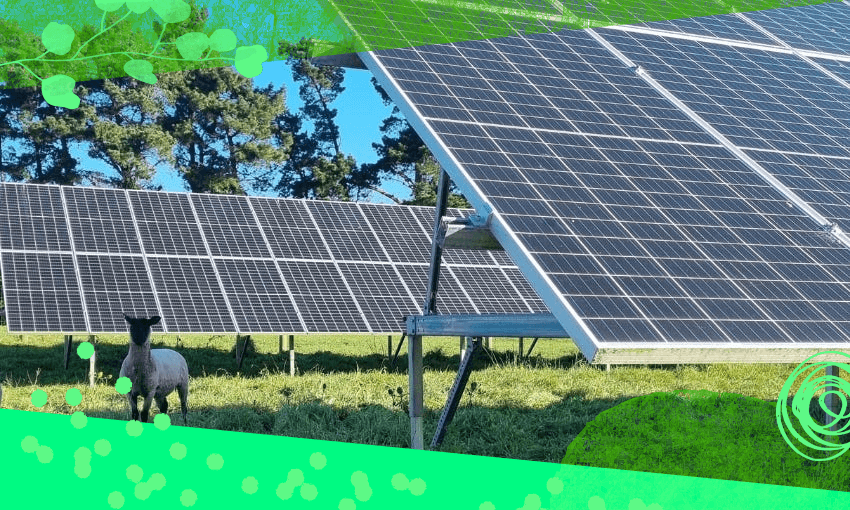Combining sheep with solar panels could be a recipe for renewable energy success.
This is an excerpt from our weekly environmental newsletter Future Proof. Sign up here.
New Zealand is on the verge of a solar boom. Eight solar farms are already operational, 40 more are in various stages of development, and a whopping eight gigawatts worth are planned for commissioning by 2028.
Eight gigawatts is more than the country’s power demand on a typical winter’s day, researchers Alan Brent and Catherine Iorns point out on The Conversation.
But solar farms require lots of flat area for panels – land that could otherwise be used for regular farming.
Enter the Old El Paso girl: why don’t we have both?
Sheep plus solar power: A ‘major opportunity’
Combining solar arrays with crop or livestock farming is an emerging concept called agrivoltaics.
An agrivoltaic set-up differs slightly compared to a conventional solar array. Panels are spaced further apart and lifted on higher mounts, allowing space for both farm equipment and light to reach underlying crops or pasture.
The concept is popping off globally as a way to both feed people and generate sustainable energy. In South Korea, solar panels shade broccoli. In Spain, strawberries, and in France, grape vines. The shade of the solar panels can reduce a crop’s water needs, while not impacting harvest yields, and create a more temperate microclimate that reduces both heat stress and frost damage.
But here in New Zealand, it’s the sheep + solar combo that is “a major opportunity”, say Brent and Iorns. In fact, sheep are often already brought in to clean up overgrown vegetation in conventional solar arrays, a practice called solar grazing.
Deliberately blending solar power with livestock grazing can boost profitability for sheep and beef farmers, according to a Canterbury case study. On dairy farms, agrivoltaics looks to be less lucrative.
RNZ’s Country Life podcast visited one of New Zealand’s newest forays into agrivoltaics, the Kohirā solar farm near Kaitāia, which opened in February this year. Here, 170 sheep roam under the panels, enjoying the shade and shelter they provide. “We see the sheep sitting down for longer periods than most farms, which means that they’re sort of content, they’re full,” Connor Dent told the podcast. Meanwhile, the solar panels overhead generate enough power for 7,000 homes.
‘We have enough land for all of this’
More than half of New Zealand’s land is currently used for agriculture, and a mapping exercise found that around 80% of this is rated ‘good’ or ‘fair’ for agrivoltaics.
But does this mean we’ll see the rural landscape converted wholesale into a sea of grey panels? At the moment, it’s “first in, first served,” Iorns told the Newsable podcast. But: “If we had a better spatial plan around the country to figure out where it could best be done, we could have huge win-wins. We have enough land for all of this.”


